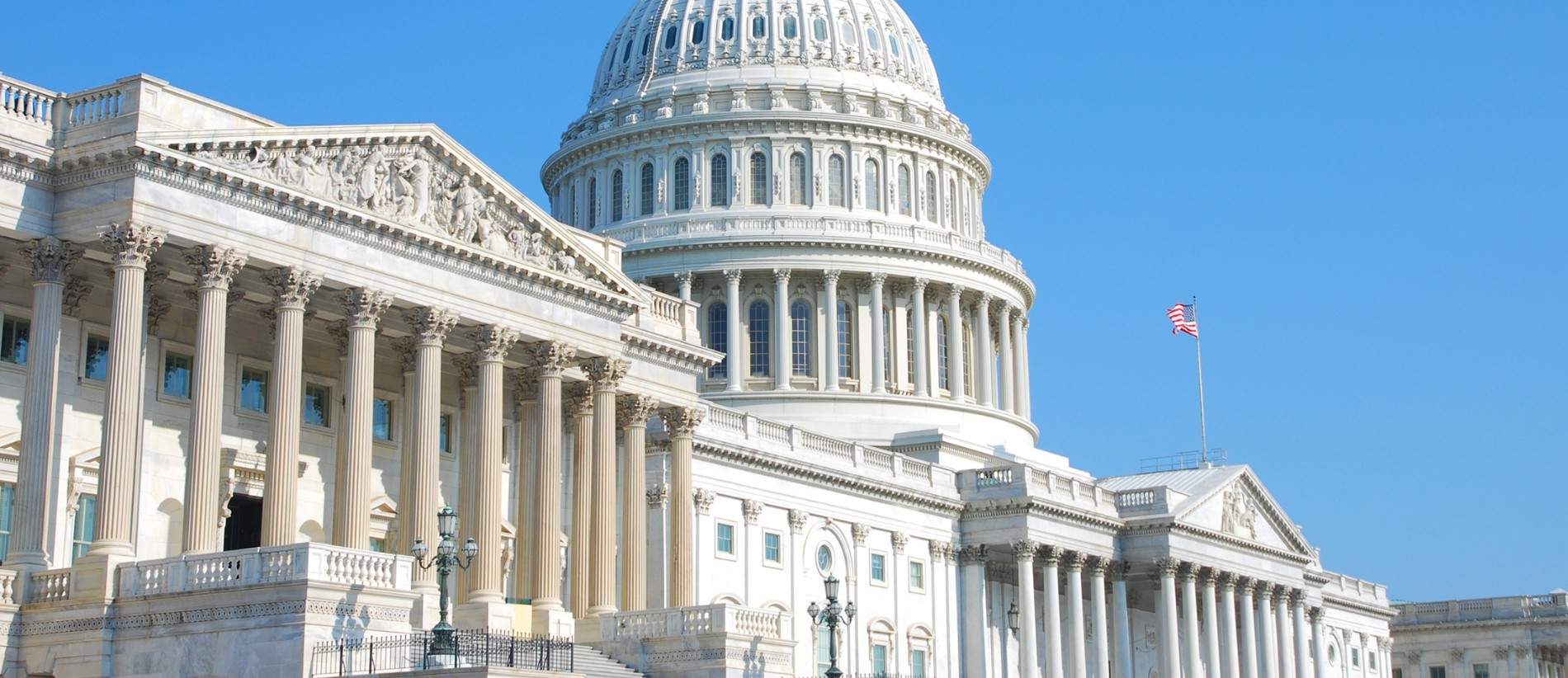On March 11, President Biden signed into law the American Rescue Plan, a $1.9 trillion package championed by the president to address the public health and economic consequences of the COVID-19 pandemic. Among the nearly 650 pages of legislative text are provisions important for employers, including:
COBRA subsidies
Enhanced paid leave and employee retention tax credits
Defined benefit plan funding relief (paid for with a change to how much public companies can deduct for certain wages)
New grants and loans for restaurants, nonprofits and entertainment venues
The package’s key elements address healthcare, retirement and compensation, paid leave, and additional assistance for businesses. Find out more about each below and learn about what comes next.
Healthcare
SUBSIDIES TO PAY FOR COBRA: Individuals who lost their employer-sponsored health coverage because of an employee’s involuntary termination of employment or reduction of work hours can continue that coverage through COBRA at no cost from April 1 to Sept. 30, 2021. Individuals who lost coverage over the past 18 months and either declined COBRA or accepted but later dropped COBRA are also eligible for the 100% subsidy if they enroll in COBRA during a special 60-day enrollment period. Employers have a new notice obligation for those who are eligible for the subsidy and will capture forgone COBRA premium payments by claiming a credit on their employment taxes.
Lockton comment: The federal government previously subsidized COBRA during the “Great Recession” in 2009. Federal studies show that relatively few people took advantage of the subsidy, but the new subsidy differs significantly and will likely impact plan sponsors. The new subsidy covers the entire cost of COBRA, making it more attractive than the 2009 subsidy, which covered only 65% of the premium. Compliance with the new law also requires employers to look back over a longer period of time to find potentially eligible individuals. A final complicating matter is that the subsidy comes on the heels of a complicated announcement (opens a new window) by the Department of Labor dealing with extended COBRA election periods. Look for a more extensive analysis of the COBRA subsidy rules in the near future.
DEPENDENT CARE FLEXIBLE SPENDING ARRANGEMENTS: Legislation passed in late 2020 gave employers the option to permit employees with unspent DCAP funds to roll those funds into 2021. While this rule ensures individuals do not need to forfeit excess contribution, the IRS interpreted the rule (opens a new window) as requiring individuals to include as taxable income reimbursements in excess of $5,000. The American Rescue Plan increases the DCAP limit to $10,500 for 2021. The change effectively eliminates the need for individuals to pay taxes on DCAP rollovers.
ENHANCED ACA INDIVIDUAL MARKET SUBSIDIES: The new law ensures that for 2021 and 2022 no one with marketplace coverage pays more than 8.5% of income for coverage and expands ACA subsidies to those making more than 400% of the federal poverty level. These changes do not modify the longstanding ACA rule that employees and members of their households are ineligible for marketplace subsidies if the employee has an an offer of affordable and minimum value coverage through an employer plan. However, it does make it more likely that some employees will erroneously receive subsidized marketplace coverage triggering notices to employers of potential ACA employer mandate penalties. Employers will still be able to escape penalties but only after jumping through bothersome administrative hoops.
MENTAL HEALTH AND SUBSTANCE USE FUNDING: Billions of dollars are committed for mental health and substance use treatment and training.
Lockton comment: The ARPA does not impose any additional requirements on plan sponsors. It does, however, provide additional evidence that the federal government is paying close attention to how the pandemic is exacerbating the need to address mental health and substance abuse. This growing narrative suggests the Department of Labor may step up enforcement of the mental health and substance use parity rules already on the books.
FUNDS TO ADDRESS COVID-19: Testing, tracing and vaccinations get additional funds in the ARPA. Rural healthcare providers, the Indian Health Service and state Medicaid budgets also get a boost.
Retirement and compensation
SINGLE-EMPLOYER PENSION FUNDING STABILIZATION: Today’s combination of low interest rates and decreased revenue due to the pandemic has created the perfect storm for companies that maintain defined benefit pension plans. To assist, the new law (1) extends and enhances interest rate smoothing and (2) increases the number of years employers have to pay for pension liabilities from seven to 15. The new law also provides for additional flexibility for plan sponsors, including options to:
Have 15-year amortization and a “fresh start” begin to apply beginning in any year from 2019 to 2022
Delay the interest rate smoothing changes until 2020 or 2022
Employers delaying the application of the smoothing changes have the additional choice of delaying those changes for all purposes or only for purposes of the benefit restrictions
MULTIEMPLOYER PENSION PLAN RELIEF: The ARPA also provides financial assistance and funding relief for multiemployer pension plans.
COMPENSATION DEDUCTION UNDER TAX CODE SECTION 162(M): The number of employees covered by Section 162(m) of the tax code, which limits the non-deductibility of compensation over $1 million for select employees of public companies, is expanded beginning in 2028. Under current law, only the top five employees (the CEO, the CFO and the three highest-paid employees) are covered by this provision (plus certain previously covered employees). The new rule provides that for taxable years beginning after Dec. 31, 2027, an additional five employees will be covered based on compensation (until they subsequently drop out of the “additional” group of five).
Lockton comment: This provision raises revenue and offsets spending elsewhere. Simultaneously, the Senate removed a more far-reaching revenue raiser that would have frozen the annual cost-of-living adjustments (COLAs) for contributions to defined contribution plans and for the maximum annual benefit under defined benefit plans.
Paid leave and wages
EXTENDED TAX CREDITS FOR SOME PAID LEAVE: The Emergency Paid Sick Leave (EPSL) and Emergency Family and Medical Leave Expansion (EFMLE) mandates in the Families First Coronavirus Response Act (FFCRA) expired after Dec. 31, 2020. However, tax credits for employers with 50-499 employees that chose to continue providing EPSL or EFMLE were made available by the Consolidated Appropriations Act (CAA). ARPA extends the availability of these credits for wages paid through Sept. 30, 2021 and makes other important changes to the tax credit structure.
Moving forward, the scope of the FFCRA will continue to be applicable to private employers with 50-499 employees. A new “bank” of leave for covered employees will begin April 1, 2021, through Sept. 30, 2021. Additionally, certain employees of state and local governments, as well as federal employees of tax-exempt 501(c)(3) organizations, will have access to the paid sick leave and paid family leave benefits. There will be slight increases in the pay caps in the paid leave provisions of the FFCRA. The family leave cap increases from $10,000 to $12,000. The qualifying reasons for both the EPSL and EFMLE are also expanded. The EPSL will now include paid time off for an employee to obtain the COVID-19 vaccination or to recover from “any injury, disability, illness, or condition related to such immunization.” The definition of qualifying leave under the EFMLE will encompass all uses of the EPSL, including leave provided if the employee is subject to a quarantine or isolation order due to COVID-19 or for employees caring for a qualified person in that situation.
NO MINIMUM WAGE INCREASE: The bill that originally passed in the House contained a provision increasing the federal minimum wage to $15/hour. Senate amendments stripped this provision from the bill.
Lockton comment: The minimum wage increase was supported by nearly every Democrat in both chambers. The reason it was stripped was because of a procedural technicality. Some Democrats are calling for future legislation to impose a tax penalty on employers that do not pay a certain minimum wage. While such a provision would not technically increase the minimum wage, employers could still choose to pay less and incur the tax penalty, it would likely cause many employers to increase their wages. The reason for to this approach is that it would allow the increase to pass without bi-partisan support. Alternatively, there are ongoing discussions attempting to reach a bipartisan compromise to raise the minimum wage even if not all the way to $15/hour.
Additional assistance for businesses
GRANTS AND LOANS FOR RESTAURANTS AND OTHER SMALL BUSINESSES: The American Rescue Plan makes additional funds available for the Paycheck Protection Program and Economic Injury Disaster Loan program. Some of the funds are specifically targeted at more nonprofits than were previously eligible, digital news services, independent live venues, independent movie theaters and cultural institutions.
A new Restaurant Revitalization Fund will be established to help small and mid-size restaurants. The fund will allocate grants of up to $5 million per restaurant or bar, $10 million for restaurant groups, provided it is not an affiliated restaurant group with more than 20 locations. Initially, priority will be given to restaurants with less than $500,000 in revenue in 2019 and women-owned restaurants. The funds can be used for a variety of purposes, including payroll, to pay off loans, and operating expenses.
EMPLOYEE RETENTION TAX CREDIT: The ERTC is extended through the end of the year. It is also modified to be refundable. Because of procedural limitations, the extended credit is taken against the employer’s share of Medicare taxes.
FUNDING FOR GOVERNMENTS AND SCHOOLS: A central component of the ARPA long-sought by Democrats is $350 billion for state, local, and Tribal governments. Another $30 billion is included specifically for transit agencies. Additionally, about $130 billion is included for K-12 schools and $40 billion for colleges and universities
Additional assistance for individuals
Additional funds are targeted to individuals and families, focusing primarily on lower-income individuals.
A third round of direct payments of up to $1,400 per person, up to certain income limits
Extends $300 per week enhanced unemployment through Sept. 6, 2021, with up to $10,200 being tax-free
Increases the child tax credit to $3,000 ($3,600 for children under age 6) for 2021
Expands the earned income tax credit
Increases the dependent care tax credit for 2021 to $4,000 for one child or $8,000 for two or more (this tax credit can be taken in lieu of participation in an employer’s dependent care flexible spending arrangement)
Additional rental and utility assistance and mortgage relief
Increased funding for food assistance programs like SNAP, WIC and EBT
What’s next?
Biden and Congressional Democrats are already looking ahead to parlay the successful passage of the American Rescue Plan into an even bolder package in the summer or fall focused on infrastructure and climate change. In the meantime, the House is likely to continue passing legislation long sought by Democrats on issues such as gun control, voting and civil rights, gender equality, and cannabis.
As the House passes more legislation, we look for tension to grow in the Senate where legislation not directly dealing with taxing and spending requires 60 votes to overcome a legislative filibuster. All 50 Democrats plus Vice President Kamala Harris would need to vote to change the filibuster, and the staunchest Senate Democrat to support the rule has begun to show a willingness to modify it. Biden, however, recently expressed a desire to keep the filibuster. Should the filibuster fall, a wide array of legislative changes could be realized in short order. For now, attention turns to the Biden-Harris administration as it begins to implement the American Rescue Plan and last year’s CAA.
Not legal advice: Nothing in this alert should be construed as legal advice. Lockton may not be considered your legal counsel, and communications with Lockton’s Government Relations group are not privileged under the attorney-client privilege.


